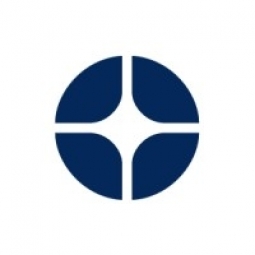公司规模
Large Corporate
地区
- America
国家
- United States
产品
- Decision Lens
技术栈
- Analytical Hierarchy Process (AHP)
实施规模
- Enterprise-wide Deployment
影响指标
- Productivity Improvements
- Customer Satisfaction
技术
- 分析与建模 - 预测分析
适用行业
- 医疗保健和医院
适用功能
- 物流运输
用例
- 补货预测
服务
- 数据科学服务
关于客户
器官共享联合网络 (UNOS) 是一家私营非营利组织,根据与联邦政府的合同,作为国家器官采购和移植网络 (OPTN)。UNOS 汇集了数百名移植器官采购专业人员和数千名志愿者,帮助每天进行挽救生命的器官移植。在过去 25 年里,美国进行的器官移植数量翻了一番,但只要有人在等候名单上,就有工作要做。
挑战
器官共享联合网络 (UNOS) 是一个非盈利组织,是全国器官获取和移植网络 (OPTN)。在过去 25 年中,美国进行的器官移植数量翻了一番,但仍有人在等待名单上。当前用于将捐赠器官与潜在接受者匹配的系统包括一个分类系统,每个器官有数十或数百个特征。该系统对不同分类有严格的界限,这可能导致器官分配不公平。例如,一个距离 251 英里的人有资格接受器官,但其优先级低于距离仅 249 英里的人,即使其他属性相对更紧急。
解决方案
为了使流程更加公平和灵活,OPTN 肺移植委员会正在开发一种基于为不同属性分配点数的连续分配系统,而不是对所涉及的每个因素进行严格的分类。这样,分配系统就可以同时考虑所有因素,考虑到每个因素在确定患者在名单上的位置时的重要性。UNOS 与 Decision Lens 合作,收集必要的反馈,对属性进行优先排序,并为这些属性分配点数。近 200 名参与者能够登录并使用该系统。在选择 Decision Lens 之前,UNOS 已经研究过几种不同的 AHP 工具,并且喜欢易于使用的用户界面,志愿者可以查看报告,患者和移植专业人员也可以参与其中。
运营影响
数量效益

Case Study missing?
Start adding your own!
Register with your work email and create a new case study profile for your business.
相关案例.

Case Study
Hospital Inventory Management
The hospital supply chain team is responsible for ensuring that the right medical supplies are readily available to clinicians when and where needed, and to do so in the most efficient manner possible. However, many of the systems and processes in use at the cancer center for supply chain management were not best suited to support these goals. Barcoding technology, a commonly used method for inventory management of medical supplies, is labor intensive, time consuming, does not provide real-time visibility into inventory levels and can be prone to error. Consequently, the lack of accurate and real-time visibility into inventory levels across multiple supply rooms in multiple hospital facilities creates additional inefficiency in the system causing over-ordering, hoarding, and wasted supplies. Other sources of waste and cost were also identified as candidates for improvement. Existing systems and processes did not provide adequate security for high-cost inventory within the hospital, which was another driver of cost. A lack of visibility into expiration dates for supplies resulted in supplies being wasted due to past expiry dates. Storage of supplies was also a key consideration given the location of the cancer center’s facilities in a dense urban setting, where space is always at a premium. In order to address the challenges outlined above, the hospital sought a solution that would provide real-time inventory information with high levels of accuracy, reduce the level of manual effort required and enable data driven decision making to ensure that the right supplies were readily available to clinicians in the right location at the right time.

Case Study
Gas Pipeline Monitoring System for Hospitals
This system integrator focuses on providing centralized gas pipeline monitoring systems for hospitals. The service they provide makes it possible for hospitals to reduce both maintenance and labor costs. Since hospitals may not have an existing network suitable for this type of system, GPRS communication provides an easy and ready-to-use solution for remote, distributed monitoring systems System Requirements - GPRS communication - Seamless connection with SCADA software - Simple, front-end control capability - Expandable I/O channels - Combine AI, DI, and DO channels

Case Study
Driving Digital Transformations for Vitro Diagnostic Medical Devices
Diagnostic devices play a vital role in helping to improve healthcare delivery. In fact, an estimated 60 percent of the world’s medical decisions are made with support from in vitrodiagnostics (IVD) solutions, such as those provided by Roche Diagnostics, an industry leader. As the demand for medical diagnostic services grows rapidly in hospitals and clinics across China, so does the market for IVD solutions. In addition, the typically high cost of these diagnostic devices means that comprehensive post-sales services are needed. Wanteed to improve three portions of thr IVD:1. Remotely monitor and manage IVD devices as fixed assets.2. Optimizing device availability with predictive maintenance.3. Recommending the best IVD solution for a customer’s needs.

Case Study
HaemoCloud Global Blood Management System
1) Deliver a connected digital product system to protect and increase the differentiated value of Haemonetics blood and plasma solutions. 2) Improve patient outcomes by increasing the efficiency of blood supply flows. 3) Navigate and satisfy a complex web of global regulatory compliance requirements. 4) Reduce costly and labor-intensive maintenance procedures.

Case Study
Cloud-based healthcare solution for Royal Philips
Royal Philips wanted to launch its cloud-based healthcare solution HealthSuite Digital Platform in China to deliver services to help cope with challenges related to urbanization and population growth. Philips wanted to achieve this goal by combining mobile, cloud computing and big data technologies. To bring this platform and product to market, Philips required cloud computing and local technical service capabilities in China, in addition to a flexible IT infrastructure that could handle user requests.








